✓ Joining us on our Whatsapp Channel: 💬 Explore and Escape!.
Booking through us:
✓ 🏩 🛌 Handpicked Luxury Stays in Budget: Booking.com | Agoda.com
✓ 🍹⛱️ Deals on Private xfers, SIM Cards, City tours, Day trips : 📍🗺️ GetYourGuide | 🛵🧳 Klook
There are an array of things to do in Italy, with Syracuse sharing quite a few of those!
Syracuse, a city with a heart as warm as its summer sun, beckons with its diverse culture, rich history, and captivating sights.
Whether you seek to stroll through art-filled neighborhoods or immerse yourself in thrilling outdoor adventures, Syracuse has got you covered.
So, pack your bags, grab your sense of adventure, and let Syracuse sweep you off your feet!
Without further ado listed below are some of the most fun things to do in Syracuse:
1. Syracuse Cathedral

Syracuse Cathedral, also known as the Cattedrale di Santa Maria delle Colonne, is a beautiful Baroque cathedral located in the heart of Syracuse, Sicily.
What to see or do: Visitors can admire the grand façade and impressive dome of the cathedral from the outside.
Inside, visitors can take in the intricate designs and paintings on the walls and ceilings, as well as the stunning columns that give the cathedral its name.
Don’t miss: Be sure to see the main altar, which is adorned with precious stones and features a beautiful painting of the Madonna and Child.
Also, check out the tomb of Saint Lucy, one of the patron saints of Syracuse, inside the cathedral.
Insider travel tips: Make sure to dress appropriately for a religious site, keeping knees and shoulders covered. The best time to visit is in the morning or late afternoon when the light is just right.
Be sure to also visit the neighboring Piazza del Duomo, which offers stunning views of the cathedral.
2. Syracuse Archaeological Park
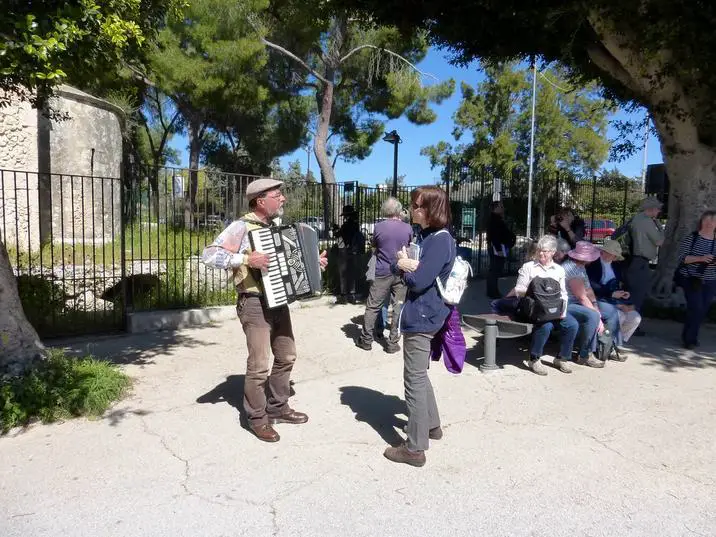
The Syracuse Archaeological Park is a vast archaeological complex that houses numerous notable ancient Greek and Roman relics.
What to see or do: Take a walking tour to discover the extensive medley of historical ruins such as the Greek theatre, Roman amphitheatre, and the Ear of Dionysius cave.
Don’t miss: Make sure to check out the Altar of Hieron II, the ancient altar used for public and civic events and festivals.
The altar is a vast 23 metres in length, and around 6.5 metres in width.
Insider travel tips: Visit the park during summertime to see the Greek theatre come alive with numerous cultural festivals such as opera and theatre performances.
To beat the crowds, arrive early on the weekends when many locals come to visit.
3. Ortygia

Ortygia is a small island located in the historic city of Syracuse, Sicily. It is the site of the ancient city’s first settlement and has many historic buildings.
What to see or do: Visit the Piazza del Duomo, home to the magnificent Syracuse Cathedral.
Don’t miss: The Temple of Apollo is a fascinating ancient Greek temple located on the island that dates back to the 6th century BC.
Insider travel tips: Ortygia can be explored on foot, so wear comfortable shoes.
4. Ear of Dionysius
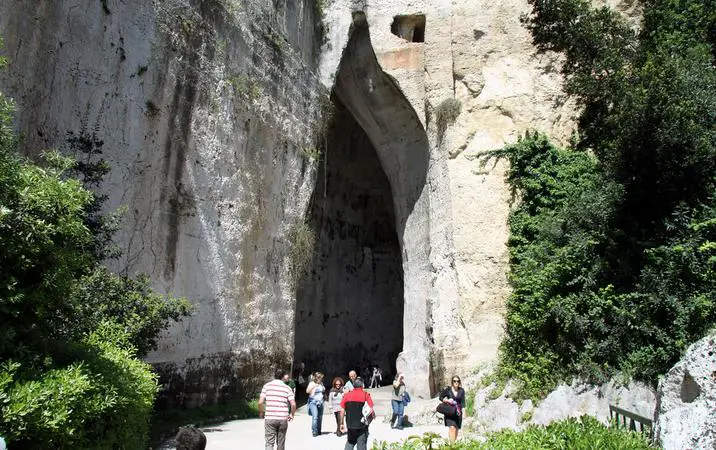
The Ear of Dionysius is a limestone cave located in the city of Syracuse, Sicily.
What to see or do: The cave is known for its unique acoustics, as its shape amplifies even the quietest sounds. Visitors can enjoy speaking, singing, or even whispering in the cave and hear their voices echo back with surprising clarity.
Don’t miss: The cave’s unique design and acoustics make it a fascinating attraction for visitors of all ages. Be sure to explore the various chambers of the cave and experiment with different sounds and volume levels.
Insider travel tips: – To fully appreciate the acoustics of the cave, try visiting during off-peak hours when there are fewer crowds.
5. Piazza del Duomo

Piazza del Duomo is a beautiful historic square located in the heart of Syracuse, Sicily.
What to see or do: The square is home to several architectural marvels such as the Cathedral of Syracuse and the imposing Palazzo Beneventano del Bosco.
Visitors can take a stroll through the square and marvel at the intricate details of the Baroque and Renaissance architecture.
Don’t miss: The Cathedral of Syracuse is a must-visit attraction on the square. This stunning cathedral is built on the site of an ancient temple and is dedicated to the Virgin Mary.
The stunning frescoes and the intricate details of the facade are a sight to behold.
Insider travel tips: Visit the square in the early morning or late evening, when the crowds are smaller and the light is perfect for photography.
For a unique experience, visit the square during the Feast of St. Lucy, which takes place on December 13th and is celebrated with a large procession and fireworks display.
6. Greek Theatre

The Greek Theatre in Syracuse, also known as Teatro Greco, is an ancient amphitheater that dates back to the 5th century BC.
What to see or do: Visitors can explore the expansive theater, which was once the largest in the ancient world with a seating capacity of over 15,000 spectators.
The theater is still used today for performances and festivals during the summer months.
Don’t miss: Make sure to take in the breathtaking views of the bay and the surrounding landscapes from the top of the theater.
Insider travel tips: – The best time to visit is during the summer months when the theater is still in use for performances.
7. Fontana di Artemide
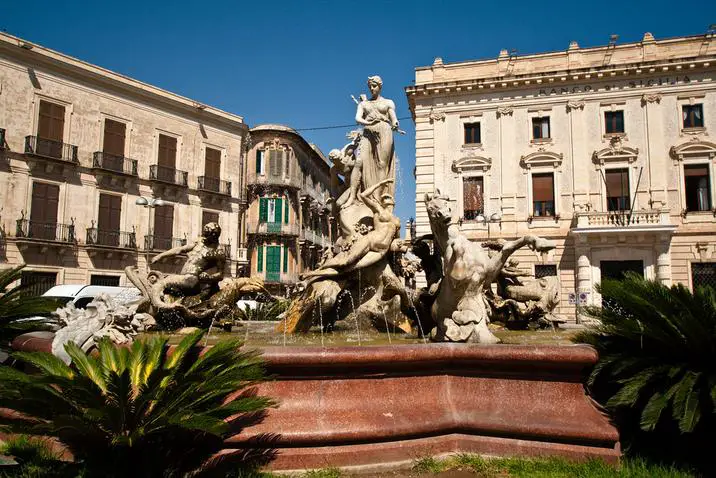
The Fontana di Artemide or the Fountain of Artemis is one of the most beautiful fountains in Syracuse.
What to see or do: Visitors can admire the stunning sculpted figures of Artemis, the Greek goddess of the hunt, along with other animals and mythical creatures, all carved beautifully out of white marble.
It’s a perfect spot for photo opportunities and to marvel at the intricate details of the fountain.
Don’t miss: The mesmerizing fountain light show at night is a must-see.
Insider travel tips: It’s best to visit the fountain during sunrise or sunset to avoid crowds and get better picture opportunities.
The fountain is located in the historic center of Syracuse, so make sure to visit other nearby attractions, like the historic Greek Theatre.
8. Museo Archeologico Regionale Paolo Orsi
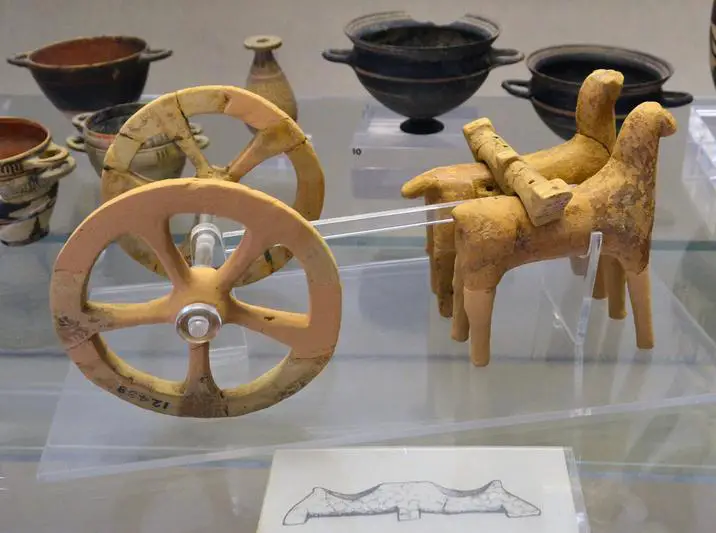
Museo Archeologico Regionale Paolo Orsi is a renowned archaeological museum located in Syracuse, Sicily.
What to see or do: The museum is home to a vast collection of artifacts dating back to prehistoric times through the Greek, Roman, and Byzantine eras.
Visitors can explore the exhibits showcasing ancient tools, pottery, jewelry, and sculptures.
You can also get a glimpse of the daily life of the ancient peoples of Sicily through the reconstructions of their homes, tombs, and temples.
Don’t miss: The impressive collection of Greek pottery, including the famous frescoes from the Tomb of the Eagles.
Also, the exhibit of the renowned Venus Landolina, a Greek marble statue of the goddess Venus that was found in Syracuse.
Insider travel tips: – To get the most out of your visit, plan to spend at least 2 hours at the museum.
9. Castello Maniace

Castello Maniace is a historic fortress located in Syracuse, Sicily.
What to see or do: Visitors can explore the centuries-old fortification that has served as a castle, a prison, and now a museum. The castle has impressive stone walls, a spectacular courtyard, and scenic vistas of the surrounding sea.
Don’t miss: Don’t miss the exhibit inside the castle that explains the history of the fortress and its strategic importance.
The views from the top of the castle are breathtaking, and there are often special events held at the castle such as outdoor concerts during the summer months.
Insider travel tips: To avoid the crowds, it is recommended to visit Castello Maniace in the morning when it opens. Additionally, wear comfortable shoes, as there are many stairs to climb within the castle.
Be sure to bring a camera to capture the stunning views and picturesque settings within the castle.
10. Catacombs of St John

The Catacombs of St John are an ancient underground network of tunnels and tombs located in the city of Syracuse, Sicily.
What to see or do: Visitors can explore the catacombs and view the various tombs and burial chambers that date back to the Byzantine and early Christian periods.
Don’t miss: Make sure to see the beautifully preserved frescoes and stone sculptures that depict various religious scenes and the lives of the early Christians.
Insider travel tips: Be aware that the catacombs can be quite dark and damp, so wear appropriate footwear and clothing. It’s also a good idea to bring a flashlight with you to fully appreciate the artwork.
Additionally, guided tours are available and highly recommended to fully understand the historical and religious significance of the catacombs.
11. Latomia del Paradiso

Latomia del Paradiso is an ancient quarry in Syracuse that was used to extract limestone for construction of the city’s buildings.
What to see or do: Visitors can explore the deep cave-like formations that were created by the excavation process, and observe the unique flora and fauna that have developed in the area.
Don’t miss: Don’t miss seeing the Ear of Dionysius, a famous grotto resembling a human ear which was named for the ancient Greek ruler of Syracuse.
Insider travel tips: To avoid crowds, visit Latomia del Paradiso early in the morning or late in the afternoon. Wear comfortable shoes as the terrain can be uneven and rocky.
If interested in history, consider taking a guided tour to learn more about the site’s significance.
12. Museo del Papiro

The Museo del Papiro is a fascinating museum in Syracuse, Sicily that is dedicated to the history and production of papyrus.
What to see or do: Visitors can explore the museum’s collection of papyrus, which includes ancient texts such as the Greek translation of the Old Testament and the works of Homer.
There are also displays showcasing the process of making papyrus, as well as exhibits on the ancient Egyptian and Greek cultures that made intensive use of this material.
Don’t miss: Be sure to see the famous Caravaggio painting “Burial of Saint Lucy,” which is on display in the museum’s entrance hall.
Insider travel tips: – Guided tours are available in multiple languages and are highly recommended for a deeper understanding of the exhibits.
13. Santa Lucia alla Badia

Santa Lucia alla Badia is a Baroque church located in the city of Syracuse, Sicily.
What to see or do: Visitors will be able to admire the wonderful Baroque architecture of the church, featuring magnificent sculptures, intricate frescoes, and various decorative elements.
Don’t miss: One of the highlights of Santa Lucia alla Badia is the painting of “Burial of Santa Lucia” by Caravaggio, which occupies the entire left transept and is considered one of the artist’s masterpieces.
Insider travel tips: – To fully appreciate the church’s beauty, consider hiring a local guide who can provide you with fascinating historical and cultural insights.
14. Fountain of Diana
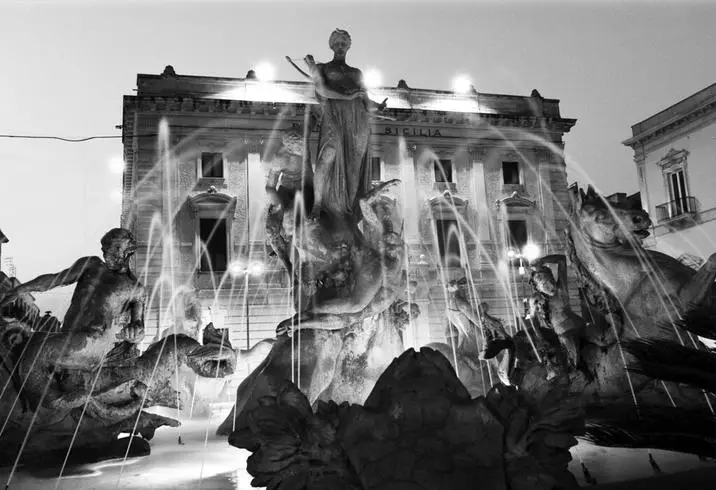
The Fountain of Diana is a beautiful fountain named after the goddess of the hunt in Greek mythology, located in Syracuse, Italy.
What to see or do: Visitors can take a leisurely stroll around the fountain, admiring the intricate sculptures and artwork of Diana, nymphs, and other animals such as deer and hounds.
The surrounding park, the Neapolis Archaeological Park, is also worth exploring.
Don’t miss: Don’t forget to take pictures of the stunning fountain and the panoramic views from the top of the hill overlooking Syracuse.
Insider travel tips: Visit the fountain early in the morning or late in the afternoon when there are fewer crowds and the lighting is perfect for photography.
Don’t forget to bring sunscreen and a hat during the hot summer months as there is little shade in the park.
15. Palazzo Bellomo

A historic palace turned into an art museum located in the heart of Syracuse.
What to see or do: Explore the many art exhibits showcasing works from the 12th Century to present day. Admire the beautiful Baroque architecture of the building and its stunning courtyard.
Don’t miss: The museum’s collection of Italian Renaissance art, including works by Antonello da Messina and Caravaggio.
Insider travel tips: Visit in the morning to avoid the crowds. Be sure to take a stroll through the nearby charming neighborhood of Ortigia.